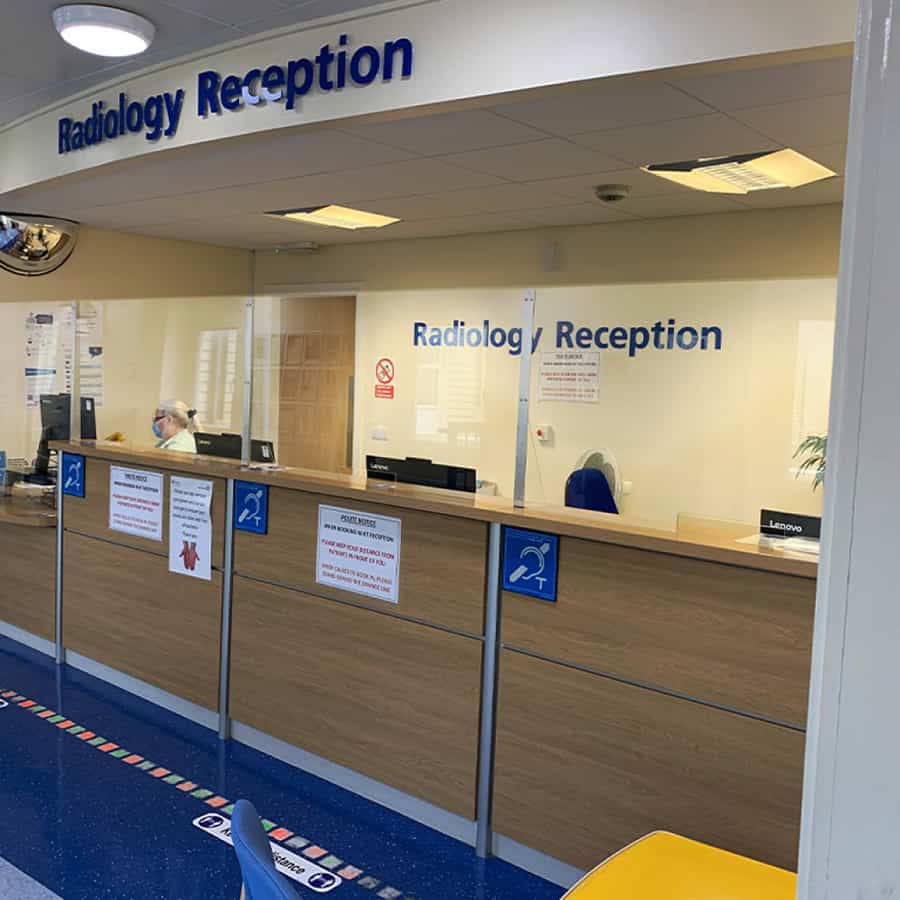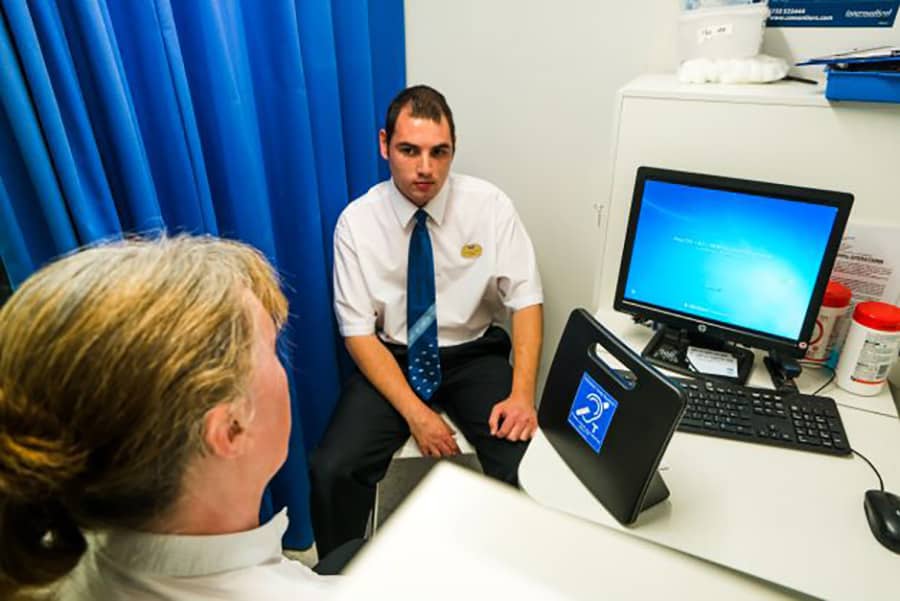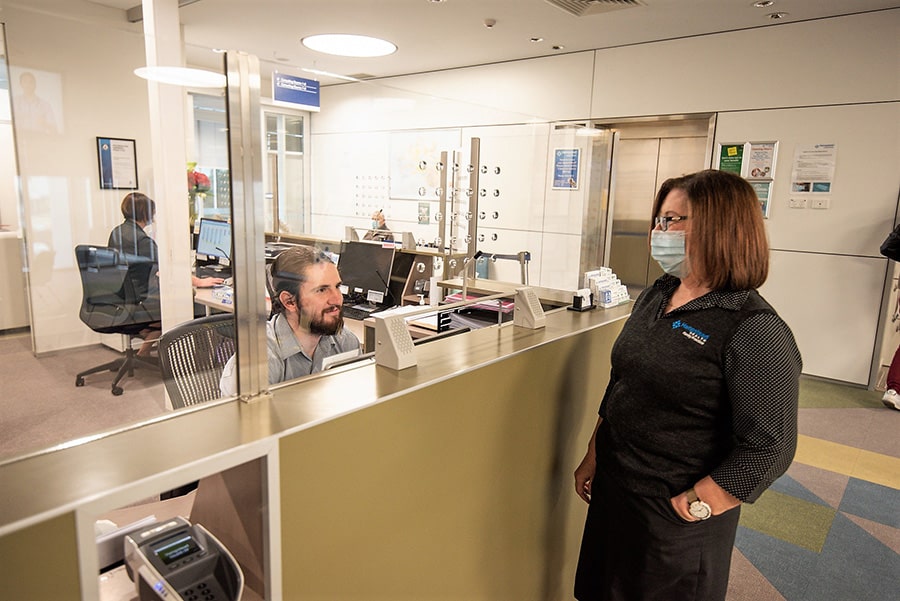EXCLUSIVE: Choosing the right assistive listening system to ensure accessibility, inclusivity and safety for patients with hearing loss

Ran Meyrav, Head of Business Development at Contacta Systems, discusses the benefits of various assistive listening systems in different environments, including hearing loops, infrared systems, radio frequency systems, and window intercom systems.
Everyone has the right to expect to be able to receive information clearly, particularly when it comes to their health or care needs.
For those with hearing loss, hearing aids may be deemed as a solution, but they amplify all the sounds around the user and are only effective over short distances. Hearing aids don’t help someone pick out the voice of a staff member from the surrounding background noise, especially if it’s across the distance of a waiting room.
Being unable to hear advice or instruction can cause embarrassment and having information repeated at a higher volume can breach confidentiality and a person’s dignity.
Assistive listening systems are the solution to this problem, not only morally but also by law, but with a broad range available, and new technologies emerging, it can be confusing as to which one is appropriate for the setting.
Hearing loss in the UK
Hearing loss is the second most common disability in the UK with an estimated 12 million people affected. With an ageing population and a growing incidence of younger people with noise-induced hearing loss, this figure is expected to reach more than 14 million by 2035.
It’s clear to see that one in every five patients or users could need assistive listening technology.
Legal requirements for clear communication
The starting point for every venue should be compliance with the law. The main piece of legislation for the UK is the Equality Act 2010, which states that: “Service providers are required to make changes, where needed, to improve services for disabled customers or potential customers… and to provide auxiliary aids and services (such as information in an accessible format, an induction loop for customers with hearing aids).”
“Potential customers” is an important phrase – while you may assume there are not any current service users with hearing loss, that can change. And as hearing loss is often a hidden disability, it is difficult to tell whether someone is struggling to hear in their environment and if they could benefit from assistive listening technology.
More recently, BS 8300-2 standards from the BSI detail best practice for hearing loop provision in public buildings. And all organisations that provide NHS care and/or publicly-funded adult social care are legally required to follow the Accessible Information Standard, meeting the information and communication needs of patients, service users, carers, and parents with a disability, impairment, or sensory loss.
The overall aim is to create an inclusive and accessible environment for everyone. And not just to offer the minimum required but to provide a good customer experience.
One-to-one conversation
Hearing loops are well-established technology that still offer the best listening experience for people face-to-face. They are the only technology that offers a globally common platform that works in the same way for the user everywhere they are installed.
They are also the only technology that has an installation standard for commissioning, meaning they should provide the same quality of sound wherever you find them.
Loops deliver a magnetic signal from a microphone, at a reception desk for example, directly to a user’s hearing aid or cochlear implant receiver. A telecoil within the device converts the signal into sound so with the simple touch of a button, a patient can hear a staff member clearly.
Hearing loops cut out background noise and there’s no confusing delay which can hamper conversation. Patients don’t need to declare their hearing loss in order to benefit and don’t need to ask for additional receivers or codes to link into the system. Interaction can take place at a normal volume. There is no risk of sensitive details being ‘shouted out’ so others can hear, maintaining both privacy and dignity for the patient or user.
Hearing loops also mean the stresses of a health appointment are not compounded by the stress of hearing only half the conversation and missing information that could be key in day-to-day wellbeing or recovery.
As well as being installed in a fixed location, portable rechargeable loops mean hearing aid users can be given clear sound in any room.
Addressing the room
There are a range of options when information needs to heard by a number of people at the same time; a waiting room, for example, where patients are called to their appointment over the PA system, the lounge in a care home when a singer performs, or the need for a fire alarm to be heard in a therapy centre.
Hearing loops are again a solution in these settings. However, the fabric of a room, or equipment within it, might mean loops don’t provide the best listening experience. Over larger areas, steel used in the building’s construction may cause metal loss which reduces the strength of the signal transmitted by the loop. Air conditioning systems can cause interference, so an expert installer is essential to make sure the right technology is chosen for the space.
Infrared systems (IR) transmit sound via invisible light. People pick up the sound via a compatible personal receiver and headphones. The sound cannot pass through walls and other barriers, so it’s ideal if confidentiality is needed in the room.
Radio frequency (RF) systems use wireless radio waves to carry the sound. Transmitters can be fixed or portable so the speaker can move around the room if needs be. Users need a receiver with headphones or an inductive neck loop if they use a hearing aid.
Other newer technologies include Wi-Fi and Bluetooth, both of which have more limited applications. Because these come in a variety of non-standardised versions, users need to be comfortable with apps and the use of a smartphone as the carrier or receiver of the sound signal.
While these variables do offer a degree of personalisation, they also make it more difficult to predict the quality of sound and performance that users experience.
COVID has changed the listening landscape
Face masks introduced during the COVID pandemic are still being worn by many health and social care staff. As well as removing the visual clues essential in understanding conversation, they also reduce sound levels by between 3-12 decibels.
Add to this the Perspex or glass screens that are now commonplace, and even those of us with perfect hearing can struggle to catch every word.
Window intercom systems, which are used widely at banking counters and ticket offices, are now a solution for clear communication in clinics, care home reception areas, and doctors’ surgeries. They can even be incorporated into portable screens.
Those with an ‘open duplex’ amplifier allow both parties to speak simultaneously and enjoy a ‘normal’ conversation. This is particularly important for people with cognitive decline, speech and language difficulties, or people with visual impairments who can’t use physical cues for conversation.
Energy efficiency in a 24-hour world
Services can operate around the clock and energy prices are now a key concern for many providers. But the latest assistive listening systems and window intercoms are now very energy efficient. They generate very little heat and a ‘sleep’ function means they don’t activate unless they detect speech.
Expert advice is invaluable
With budgets always a consideration, it pays to get expert advice. A professional installer will carry out a number of tests to decide which system best suits the space and its users. They will also complete the work with the minimum disruption.
‘Experts’ also come in the form of patients and users with hearing loss. Involving them in planning an installation can enhance the outcome even further. They help an engineer to understand the best position of hearing loops to enable them to meet the required standard for the user, and where to place signage so that it can be clearly seen.
Protect your investment
Just like the air conditioning system or the car that gets you to work, regular maintenance makes sure your assistive listening system works well and to the standard that gives users the best listening experience.
Not only does it mean that system will work well for many years to come, but it also gives you confidence that you’re meeting your legal and moral obligations to meet the access needs of people with hearing loss.





